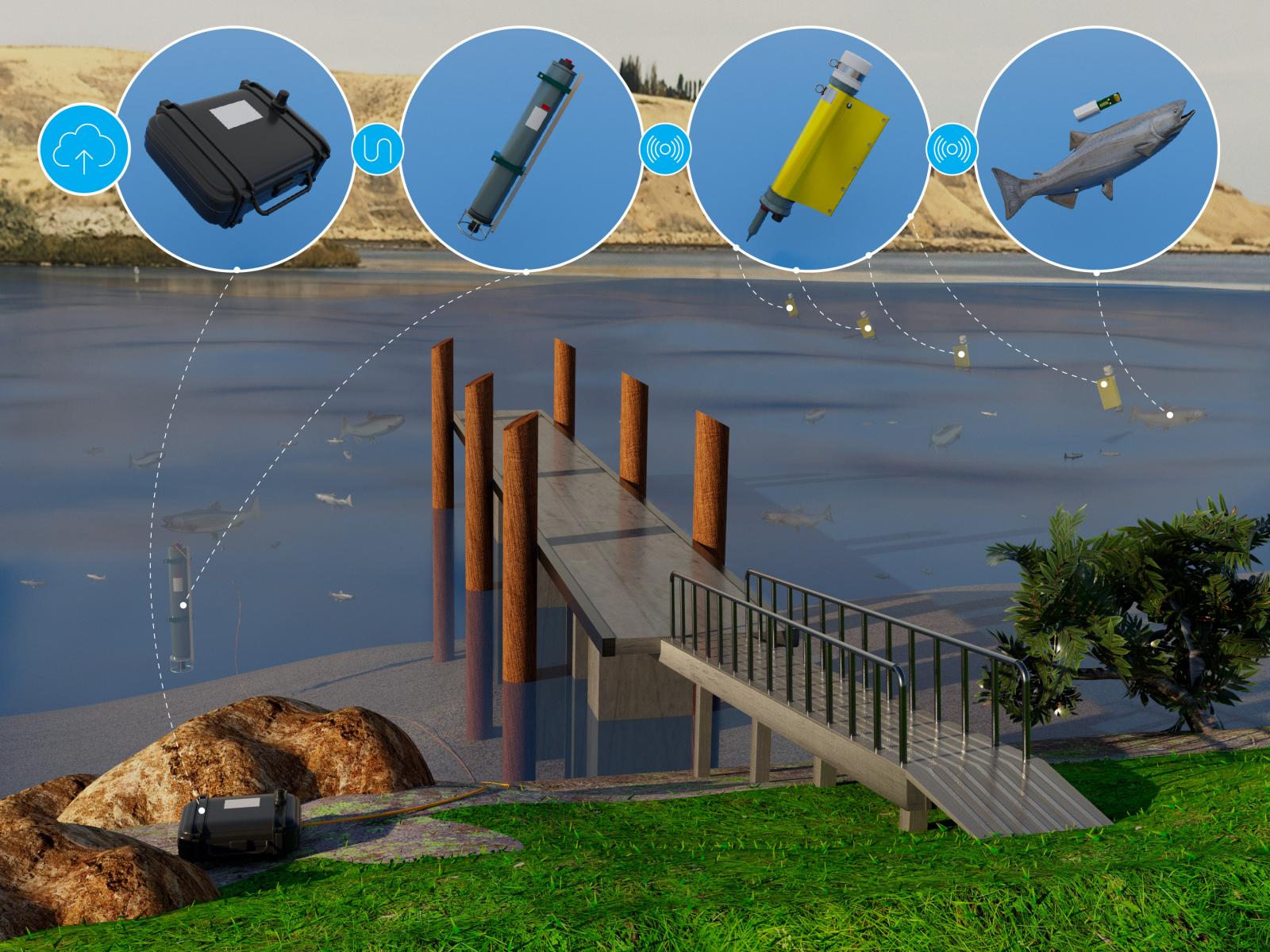新しい音響受信機により、水力発電ダムの魚道通過を支援するためのタイムリーな魚の追跡が可能になりました。 New acoustic receiver enables timely fish tracking to support fish passage through hydropower dams
2022-08-23 アメリカ・パシフィック・ノースウェスト国立研究所(PNNL)

受信機は、ダム管理者に1時間ごとのデータを提供し、幼魚の大群がダムに近づいていることが明らかになったときに水流を調整するなど、魚道の支援に関する日々の決定を支援する。
小川や河川の遠隔地や到達しにくい場所に水中設置して、無線で情報をクラウドにアップロードできる自律型音響レシーバーを開発しました。
新しい受信機は、魚が泳ぎながら送信機からデータを収集し、データを処理・圧縮する。圧縮されたデータは1時間ごとに陸上の小型モデムに無線で送られ、クラウドに直接アップロードされ、ダム管理者や意思決定者がデータにアクセスできるようになる。これにより、ほぼリアルタイムで魚を追跡でき、受信機に異常が発生した場合は警告が出されるので、問題があればすぐに解決でき、データの損失も最小限に抑えることができる。
<関連情報>
- https://www.pnnl.gov/news-media/faster-fish-tracking-through-cloud
- https://ieeexplore.ieee.org/document/9754359
魚類行動研究および環境センシングのためのエッジコンピューティングによるリアルタイム水中音響テレメトリー受信機 A real-time underwater acoustic telemetry receiver with edge computing for studying fish behavior and environmental sensing
Yang Yang,Robbert Elsinghorst,Jayson J Martinez,Hongfei Hou,Jun Lu,Zhiqun Daniel Deng
IEEE Internet of Things Published:08 April 2022
DOI: 10.1109/JIOT.2022.3164092
Abstract
Underwater acoustic telemetry has emerged as a powerful tool for practical applications, including resource exploration, environmental monitoring, and aquatic animal tracking. However, current acoustic telemetry systems lack the capability to transmit the collected data continuously in real time, primarily because the acoustic networking bandwidth is limited. Retrieval of the recorded measurements from the deployed receivers usually must be manual, leading to long delays in data retrieval and processing, high operational costs associated with the required manpower, and safety risks for the operators. In addition, there is no efficient way to continuously assess the status of the acoustic telemetry system, including the acoustic transmitters and receivers. Here, we describe the design, implementation, and field validation of a cloud-based, real-time, underwater acoustic telemetry system with edge computing for estimating fish behavior and monitoring environmental parameters. The system incorporates microcontrollers for edge computing and connects to a cloud-based service that further post-processes the transmitted data stream to derive behavior and survival information of tagged animals. The developed system has been demonstrated to have significantly improved performance over the benchmark system because of the integration of edge computing, with a greatly reduced energy consumption of 0.014 watts resulting in the energy used by the acoustic modem being reduced by over 300 times. This work opens up new design opportunities for future real-time and multifunctional underwater acoustic systems.



